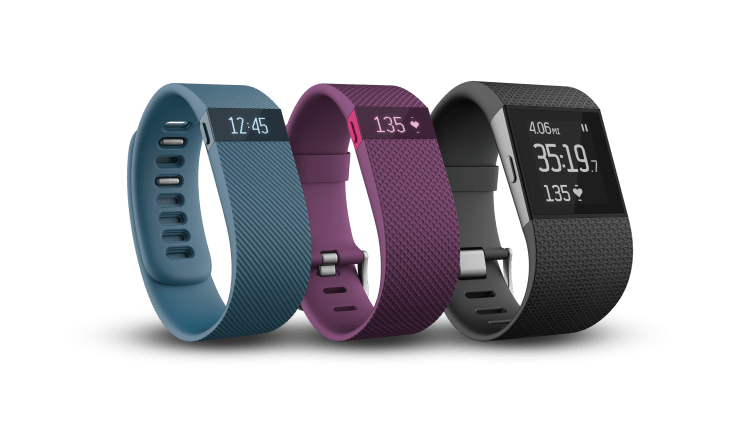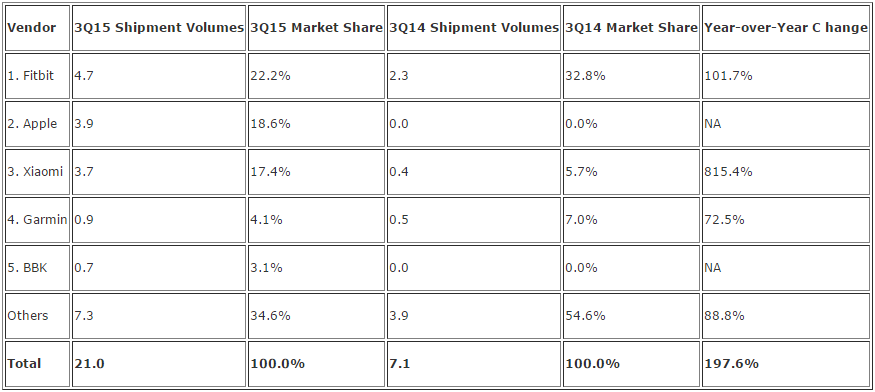Smartphones and tablets may be dominated by big tech companies, but wearables are still led by the little guy. In Q3 2015, Fitbit narrowly stole first place again, keeping it ahead of Apple and Xiaomi. At the same time, Chinese vendor XTC, a subsidiary of BBK, beat out Samsung for fifth place.
Mobile companies shipped a total of 21.0 million wearables worldwide last quarter. That figure is up 197.6 percent from the 7.1 million units shipped in Q3 2014.
Because this is such a new space, you can expect the top five vendors will not only shift places, but come in and drop out on a quarterly basis. The latest figures come from IDC, which summarized its findings in the following chart:
As you can see above, Fitbit’s market share actually decreased by 10.6 percentage points (from 32.8 percent to 22.2 percent), despite shipping more than double the number of devices (4.7 million). From almost a third of the market to just over a fifth — that’s what happens when the market grows almost 200 percent.
Nevertheless, Fitbit remained first thanks to its popular Fitbit Charge and Fitbit Surge models, according to IDC. Its fast-growing Corporate Wellness strategy, which now has more than 70 Fortune 500 companies deploying Fitbit devices to its employees, also played a big part.
Apple meanwhile debuted at 18.6 percent, jumping straight into second place — where it also started last quarter. We can’t compare year-over-year growth, but shipping 3.6 million watches in Q2 and then 3.9 million watches in Q3 (mostly the result of additional markets joining) shows the Apple Watch is doing just fine. The holiday quarter will naturally be the one to watch.
Xiaomi showed the most growth by far, thanks to its inexpensive Mi Band. At 17.4 percent, the company gained 11.7 points. That’s because the Chinese giant went from shipping 0.4 million units to shipping 3.7 million this past quarter. More than 97 percent of Xiaomi’s volumes shipped into China, showing the company still has a lot of room to expand.
“The early stages of the wearables market have led to tight competition among the leading vendors, and Chinese vendors have seized upon market momentum to grab market share,” IDC’s Ramon Llamas said in a statement. “China has quickly emerged as the fastest-growing wearables market, attracting companies eager to compete on price and feature sets.”
Garmin’s share meanwhile slipped 2.9 points to 4.1 percent. Its Vivo sub-brand of bands and watches kept the focus on athletes running, playing golf, swimming, hiking, and various aquatics activities.
BBK debuted at 3.1 percent with just one device: the Y01, a children’s phone watch. Samsung lost the number five position by just 100,000 units in its worldwide debut, but that’s still a blow to the South Korean giant.
IDC points out that despite the growth of smartwatches, interest in fitness trackers has not fallen. By the end of 3Q15, shipment volumes for both product categories increased sequentially and year over year.
For now at least, the categories can coexist and grow. One has to wonder, though, how long this can last.
VentureBeat's mission is to be a digital town square for technical decision-makers to gain knowledge about transformative enterprise technology and transact. Learn More


